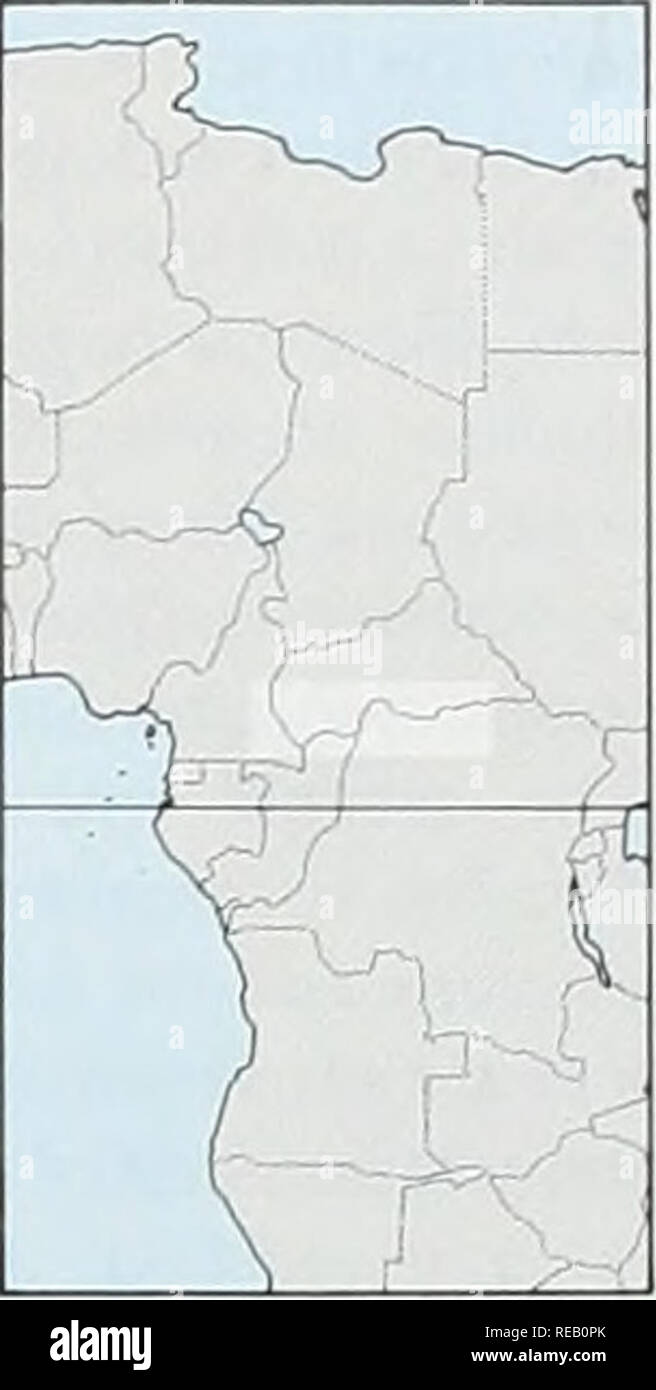. The Conservation Atlas of Tropical Forests: Africa. 14 Central African Republic Land area 622,980 sq. km Population (mid-1990) 2 9 million Population growth rate in 1990 2 5 per cent Population projected to 2020 5 9 million Gross notional product per capita (1988) USS390 Rain forest (see mop) 52,236 sq, km Closed broadleaved forest (end 1980)* 35,900 sq. km Annual deforestation rate (1981-5)* 50 sq km Industrial roundwood productiont 400,000 lu m Industrial roundwood exports) 28,000 cu m Fuelwood and charcool productiont 3,055,000 tu m Processed wood productiont 56,000 cu m Processed wood ex

Image details
Contributor:
The Book Worm / Alamy Stock PhotoImage ID:
REB0PKFile size:
7.2 MB (145.7 KB Compressed download)Releases:
Model - no | Property - noDo I need a release?Dimensions:
1124 x 2225 px | 19 x 37.7 cm | 7.5 x 14.8 inches | 150dpiMore information:
This image is a public domain image, which means either that copyright has expired in the image or the copyright holder has waived their copyright. Alamy charges you a fee for access to the high resolution copy of the image.
This image could have imperfections as it’s either historical or reportage.
. The Conservation Atlas of Tropical Forests: Africa. 14 Central African Republic Land area 622, 980 sq. km Population (mid-1990) 2 9 million Population growth rate in 1990 2 5 per cent Population projected to 2020 5 9 million Gross notional product per capita (1988) USS390 Rain forest (see mop) 52, 236 sq, km Closed broadleaved forest (end 1980)* 35, 900 sq. km Annual deforestation rate (1981-5)* 50 sq km Industrial roundwood productiont 400, 000 lu m Industrial roundwood exports) 28, 000 cu m Fuelwood and charcool productiont 3, 055, 000 tu m Processed wood productiont 56, 000 cu m Processed wood exports) 25, 000 cu m • FAO (19881 t 1989 dola from FAO (19911. Tlie sparseJy populated Central African Republic contained, until recently, some of the most spectacular wilderness areas in Africa. The larger mammals in the north have now been decimated by heavily armed bands of poachers from neigh- bouring Chad and Sudan, but the forests in the south still shelter a very rich fauna. These forests contain some of Africa's richest stands of valuable hardwoods, protected in part by the enormous cost of transporting the timber to the sea for export. The timber trade has declined in recent years in the face of competition from cheaper timbers from other African and Asian countries and it may continue to do so in spite of the threat posed by the construction of a major highway link- ing the capital, Bangui, with the Atlantic Ocean. The dense forests of the south-west are the scene of one of Africa's most interesting forest conservation projects: an attempt by WCI and NX^F to achieve forest protection and wise use in an area occupied by Aka pygmies. The project is supported by the World Bank and USAID. Introduction The Central African Republic (CAR), as its name suggests, is situ- ated in the heart of the African continent between 2° 13' and 11°01'N and 14=25' and 27"27'E. It is bordered by Chad to the north, to the east by Sudan, to the south by Zaire and the Congo, and by Came